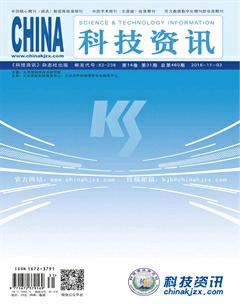公交主导型多方式交通网络的协同机理与耦合理论2013年度报告
王炜
摘要:本研究紧密结合我国城市交通结构发展现状和公交优先国家目标需求,立足于公交主导型交通网络条件下居民出行特征与多方式网络承载力特性的深入研究,揭示地面公交网络-轨道网络-道路网络的相互作用机理,建立交通网络多方式系统耦合理论,并将理论研究成果应用于多方式交通网络效能评估。项目研究总体上从公交主导型多方式交通网络出行需求与供给特性分析、公交主导型多层次交通网络相互作用与系统耦合、多方式交通网络效能评估这三个紧密相关、依次递进方面上开展理论与应用研究。首先,基于对公交主导型交通网络条件下居民出行行为特征与出行需求的合理认知、把握与诊断,本年度开展大量调查,获取并分析公交主导型交通网络条件下居民出行特征基础数据,实现公交主导型多方式交通网络下基础数据的采集及数据库的建立,构建公交出行行为辨识模型、基于满意度的公交服务贝叶斯网络模型以及以大运量公交为主的多方式联合出行整体效用模型,解析公交主导型多方式网络中的多重复杂出行需求;其次,从多方式交通网络的地面公交运行特性与通行能力出发,研究多层次交通网络对客流影响,探讨地面公交与轨道运输能力一体化的衔接方法,构建宏观客流在多层次交通网络上的转移模型;再次,在宏观层面上对居民出行分布与公交主导型网络结构的耦合关系进行了分析,形成基于结构耦合模型的公交网络等级配置、公交网络布局以及轨道交通与地面交通网络换乘设施的优化方法,深入分析公交主导型多层次交通网络系统耦合作用机制;最后,在明确了轨道网络与地面交通网络的耦合内涵基础上,综合宏观网络层面与微观通行层面,建立了包含出行效率、公交承载力、排放与能耗、建设费用在内的差异化指标评价体系,并采用实地调查获取的道路及交通流参数建立多方式交通网络效能分析实证平台,提出了基于公交及社会车辆通行效率评价的优先策略反馈机制和基于MATLAB的污染物浓度分布可视化展现。为成果在交通结构优化和节能减排方面的推广应用提供扎实的基础和可靠的依据。
关键词:公交主导;多方式交通网络;耦合理论
Interaction Mechanism and Coupling Theory of Transit-oriented Multimodal Urban Traffic Systems
Abstract:Based on the capacity and activity-travel behavior study of transit-oriented traffic network, this project has revealed the interactions among bus network, metro network and road network, and has established the coupling theory among those multimodal networks. In general, those studies can be divided into three levels: transit-oriented multimodal demand and supply, multi-typed interactions between different networks and efficiency evaluation of those networks. Firstly, investigations were conducted based on understandings of activity-travel behavior under transit-oriented traffic network and related database was established. Models like identification model for bus travel behavior, Bayesian network model for bus service level and multimodal utility model were built based on those data to provide comprehensive understanding of multiple and complex travel demand; then, impacts of multimodal networks on traffic flow were studies based on the understanding of operating characteristics and capacity of urban ground transit network. A methodology towards more integrated ground and underground transit and traffic flow transfer models between those networks were established. Furthermore, a deep study on coupling theories between trip distribution and transit-oriented networks as well as coupling theory among different transit network, help to form the utilized mechanisms for level configuration, network layout and ground transportation network transfer facility towards multimodal transit network. Base on that, finally, a differentiated evaluation index system for both macro and micro-level of transit-oriented networks was established, including varies of factors like travel efficiency, public transportation capacity, emissions and energy consumption and construction costs, et al. and a multimodal transportation network performance analysis empirical platform was established, providing bus priority strategy based on vehicle traffic and social efficiency evaluation and feedback mechanism based on the visualized distribution of pollutant concentration based on MATLAB. Those findings can be used as basis to utilize transportation structures as well as saving energy.
Keywords:Transit-oriented;multimodal transportation network;coupling theory
閱读全文链接(需实名注册):http://www.nstrs.cn/xiangxiBG.aspx?id=48775&flag=1

